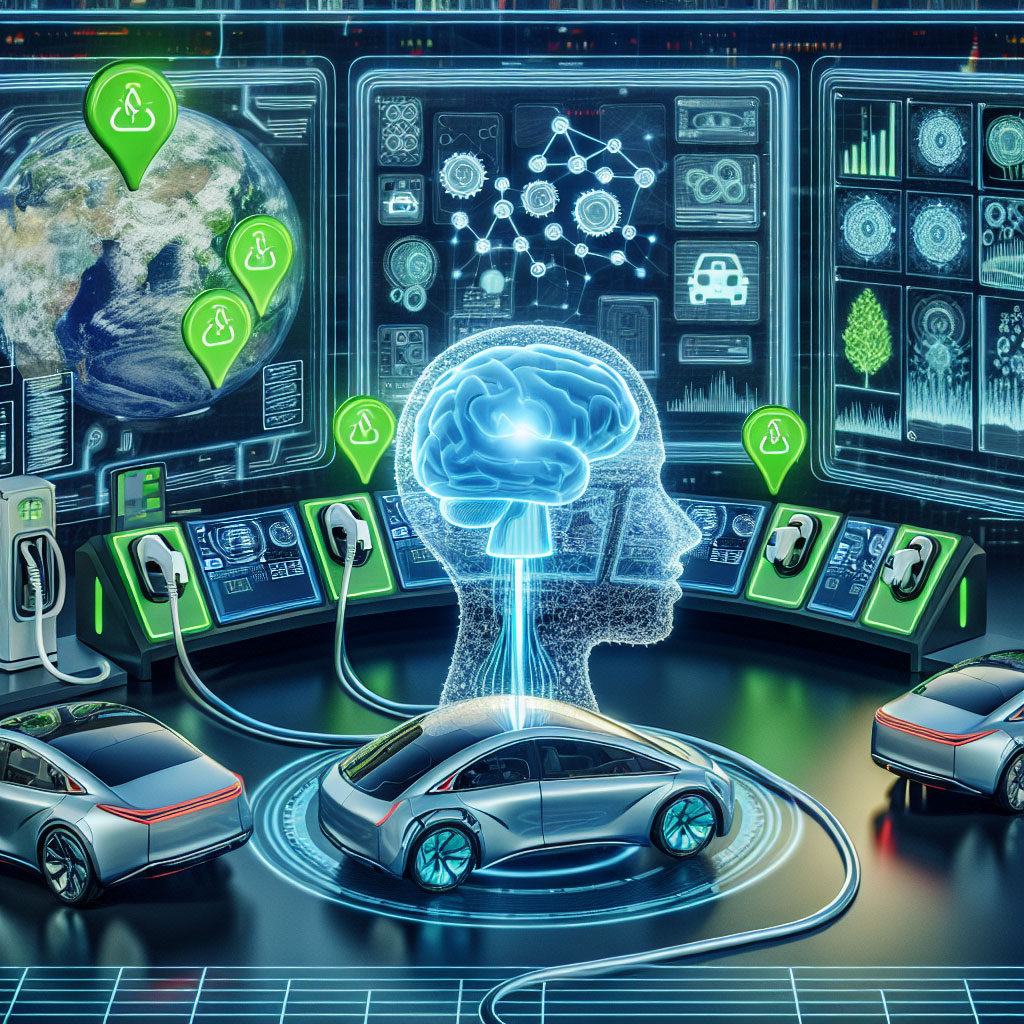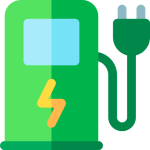
The New Commuter Reality: Why Your Workplace Needs an EV Plug
The electric vehicle (EV) revolution is accelerating in Australia.1 With every new model release and every litre of petrol saved, more employees are choosing to drive electric. Yet, a crucial piece of the infrastructure puzzle is often missing: workplace charging.2 If you’re one of the many employees driving an EV, or planning to switch soon, now is the time to lead the change.
Asking your employer to install EV charging points is not just a personal request—it’s a robust business proposal. This article provides a practical, Australian-focused guide on how to frame your request, leveraging financial incentives, employee retention strategies, and the powerful argument of corporate sustainability.
Part 1: Framing the Business Case
The key to a successful proposal is to shift the conversation from a personal request (“I need to charge my car”) to a strategic business investment (“This will benefit the company’s bottom line and future success”).
1. Financial Argument: The Low-Cost Employee Perk
Contrary to common perception, installing a few Level 2 (AC) chargers is a relatively contained capital cost, especially when measured against the return on investment in employee satisfaction and productivity.
- Low Running Costs: For the business, the running cost is simply the price of electricity consumed. With smart charging solutions, this use can be managed to occur during the middle of the day, potentially leveraging onsite solar power or avoiding peak electricity tariffs.3 You can propose a model where the cost is either absorbed as a low-cost employee benefit or recouped via a small fee.
- Minimal Infrastructure: Unlike public DC fast chargers, workplace AC chargers (7kW or 22kW) are designed for vehicles parked for 4-8 hours. Installation costs for an initial setup are generally modest compared to other commercial facility upgrades, ranging from a few thousand dollars per charger, depending on the site’s existing electrical capacity.
- Future-Proofing Property Value: Demonstrating a commitment to modern, sustainable infrastructure helps future-proof commercial property.4 As EV ownership grows, charging facilities will become an expected amenity, boosting the building’s appeal to tenants and buyers alike.
2. HR & Employee Retention: The Talent Advantage
In a tight labour market, perks that genuinely improve an employee’s life and save them money are highly valuable. Workplace charging is one of the most significant new benefits a company can offer.
- Valued Employee Benefit: For an EV driver, the ability to “fill up” their car for free or at a subsidised rate while they work is equivalent to a massive, tax-free fuel saving. This directly enhances the employee value proposition (EVP).
- Attracting Top Talent: The availability of EV charging is increasingly cited as a factor for highly skilled candidates choosing between employers.5 It positions your company as a modern, forward-thinking organisation, helping to expand and diversify the talent pool.6
- Productivity and Focus: Eliminating the need for employees to rush out during the workday (or stay up late at home) to charge their vehicle reduces stress and frees up mental space, allowing staff to be more productive and focused during business hours.7
3. Sustainability and Corporate Social Responsibility (CSR)
Workplace charging is a tangible and visible demonstration of the company’s commitment to its environmental goals, which is critical for stakeholders, customers, and employees.8
- Reduced Carbon Footprint: By supporting employees who commute in zero-emission vehicles, the company is directly addressing Scope 3 (indirect) emissions from employee travel. This is a much clearer, measurable outcome than simply buying carbon offsets.
- Visible Leadership: Chargers in the car park serve as a constant, public reminder of the company’s commitment to sustainability.9 This resonates strongly with millennial and Gen Z employees, and with corporate clients who are increasingly scrutinising their suppliers’ green credentials.
Part 2: The Australian Tax Game-Changer: FBT Exemption
This is the most crucial, uniquely Australian part of your business case. The Australian Government’s commitment to increasing EV uptake provides a powerful financial incentive your boss cannot ignore.
The Fuel and Charging FBT Exemption
Under current Fringe Benefits Tax (FBT) law, the provision of fuel, including the cost of electricity to charge an eligible electric vehicle, is often exempt from FBT, provided the EV itself is eligible (generally, first held and used on or after 1 July 2022, below the Luxury Car Tax threshold for fuel-efficient cars, and is a zero or low emissions vehicle).
- What this Means for the Business: If an employee drives an eligible EV, and the company provides the electricity for charging at the workplace, the company is typically not liable for FBT on that electricity benefit.10 This is a significant tax advantage.
- FBT Exemption on ‘Associated Car Expenses’: The ATO confirms that associated car expenses like registration, insurance, and maintenance for an eligible EV are also FBT-exempt.11 While this mostly relates to salary sacrifice arrangements, the exemption of the charging cost itself reinforces the zero-tax status of the entire EV benefit.
Crucial Note: While the FBT exemption for the electricity provided at work is usually clear, employers must be mindful of the rules regarding providing a home charging station, which is currently treated as a separate fringe benefit and may not be exempt.12 Focus your proposal primarily on the workplace infrastructure.
Part 3: Your Step-by-Step Proposal Guide
Follow these steps to construct a compelling, professional proposal for your employer or the facilities manager.
Step 1: Conduct a Needs Assessment
Before you pitch, gather the data to show there is actual demand.
- Survey Colleagues: Discreetly ask how many colleagues already drive an EV and, crucially, how many are planning to purchase one in the next 12–24 months. A small, anonymous internal survey works best.
- Establish Demand Type: For a typical office, you need Level 2 (AC) chargers, as cars are parked for a long duration.13 This avoids the high cost and high power draw of a DC fast charger.14
- Map the Location: Identify the best, most accessible car park spaces near the electrical switchboard. The shorter the distance to the power source, the lower the installation cost.
Step 2: Develop a Phased Implementation Plan
Show that you are thinking strategically and mitigating risk.
| Phase | Action | Cost & Risk Mitigation |
| Phase 1: Pilot | Install 2-4 Level 2 AC chargers. (Start with a number slightly less than current demand). | Cost: Get 2-3 quotes for a basic installation. Emphasise “smart” chargers that can meter energy use and control load. |
| Phase 2: Policy | Implement an internal ‘Code of Conduct.’ (E.g., 4-hour limit, mandatory sign-out/move, priority for long-commuters). | Risk Mitigation: Shows management that use will be governed and fair, avoiding conflict in the car park. |
| Phase 3: Scale | Review usage after 6-12 months. Install additional chargers as EV adoption among staff reaches a 2:1 vehicle-to-charger ratio. | Financial Trigger: Links further investment to demonstrated employee adoption and satisfaction. |
Step 3: Present the Proposal Summary
Structure your final pitch using this format for maximum impact:
- Executive Summary: State the recommendation clearly: “Install a 4-bay, Level 2 EV charging facility to enhance employee benefits and deliver on CSR goals.”
- The Business Case (Australia Specific): Detail the three core benefits: Recruitment/Retention, FBT Exemption (Tax Saving), and Sustainability.
- Cost and Financial Model: Present the estimated one-off capital cost and the proposed low running cost model (e.g., absorbed by the company as an FBT-exempt benefit).
- Action Plan: Outline the three-phase rollout plan.
By presenting a well-researched, financially sound, and tax-savvy business case, you transform your request from a personal plea into a genuine opportunity for your Australian employer to gain a competitive edge in a rapidly evolving market.
FAQs
Is workplace charging taxable for the employee?
Tax treatment depends on how the charging is provided. In many cases employers providing electricity to charge eligible employee EVs at work may not attract Fringe Benefits Tax (FBT), but eligibility rules and circumstances vary. This is a technical tax matter – check current ATO guidance and seek advice from your accountant.
Who should pay for workplace charging – the employer or the employee?
There are several models: employers can offer free charging as a staff benefit, subsidise it, or require employees to pay directly (via app or RFID). Which model is appropriate depends on company policy, FBT considerations, and whether charging is a recruitment/retention strategy or purely a user service.
What type of charger should an employer install?
For staff charging during the workday, Level 2 (AC) chargers (7-22 kW) are typically the best balance of cost and convenience. DC fast chargers are expensive and usually unnecessary for standard office parking. Prioritise smart chargers with energy metering and access controls.
How much does installation cost in Australia?
Costs vary with site specifics: proximity to the electrical switchboard, trenching requirements, communications and whether a switchboard upgrade is necessary. Small pilot installations can start from a few thousand dollars per connection but can be higher where significant electrical work is required. Get multiple detailed quotes from licensed installers.
Can landlords or building managers refuse workplace charging?
Yes – in tenancies and strata-managed sites, landlords and building managers may have rules that affect installation. Work with building owners early, and in commercial leases look for clauses relating to alterations and energy infrastructure. Some jurisdictions also have evolving regulations to encourage EV infrastructure in new developments.
Will workplace charging affect my company’s insurance or safety obligations?
Installations must comply with Australian electrical standards and building safety codes. Engage your insurer, workplace health and safety team, and a qualified electrician to ensure compliance and clarify any insurance implications.
What’s the difference between workplace charging and home charging for FBT?
FBT treatment for electricity supplied at an employee’s home (for charging a privately used vehicle) has different considerations and is often treated differently from workplace-provided charging. Confirm the current ATO position and seek tax advice before proposing home-charging benefits.
How can my workplace integrate charging with solar or reduce operating costs?
Smart chargers can be programmed to charge when onsite solar is producing or during off-peak periods. Load management systems prevent demand spikes and reduce the need for costly electrical upgrades. Discuss integration options with installers and your energy adviser.
About EV Evolution
EV Evolution is the leading online platform dedicated to Australian electric vehicle owners and enthusiasts. We foster a vibrant community, delivering essential EV news and insights, and enhancing user engagement through our innovative, AI-powered chatbot for dynamic discussions. Our mission is to empower Australian electric vehicle owners and enthusiasts by fostering a vibrant, AI-driven online community that connects, informs, and advances the nation’s electric vehicle landscape.




